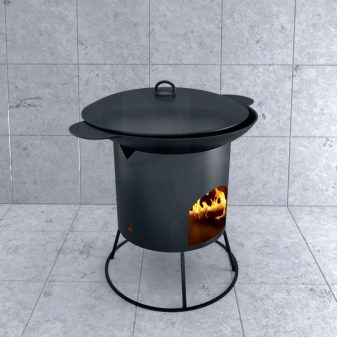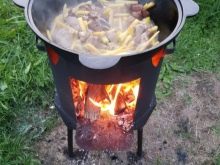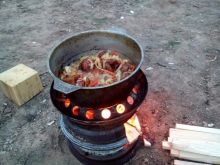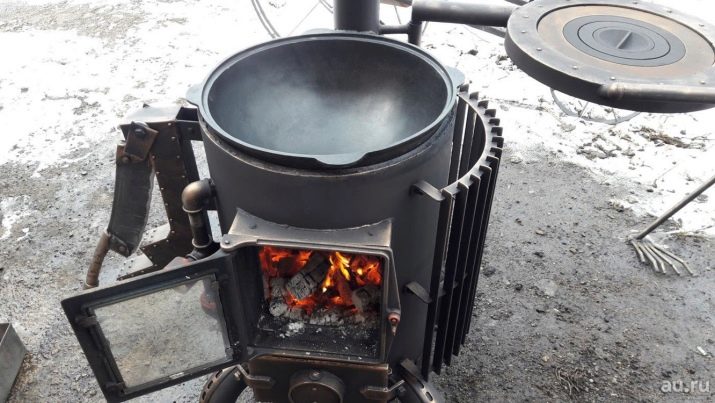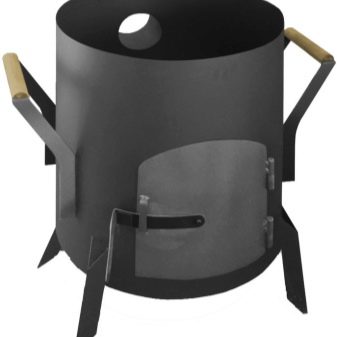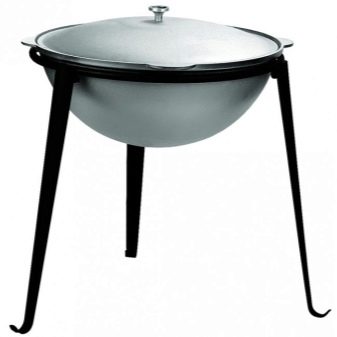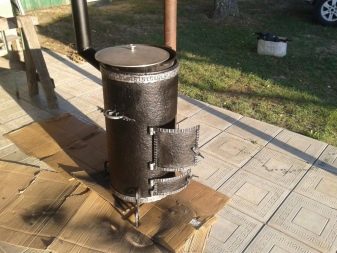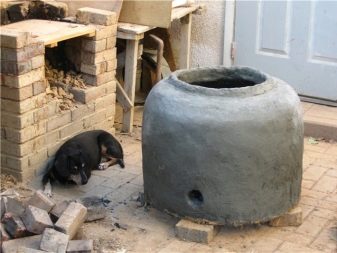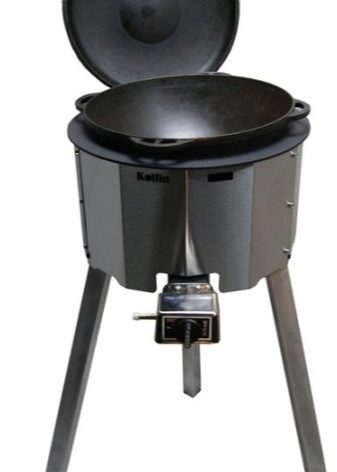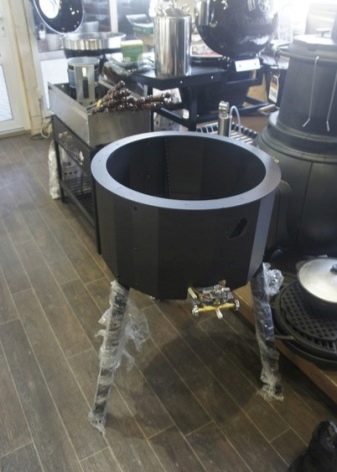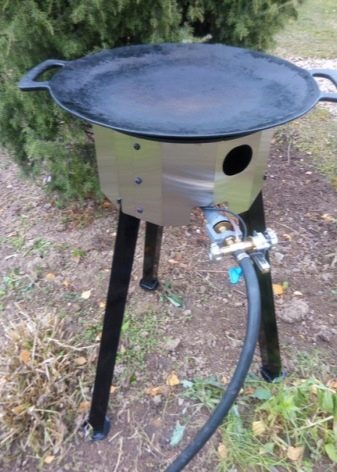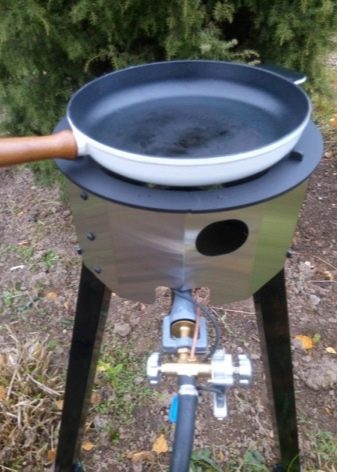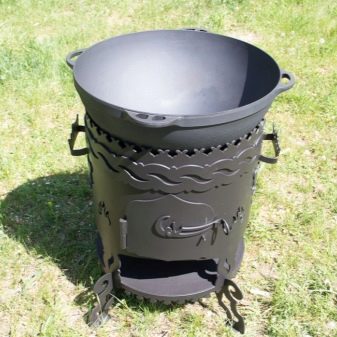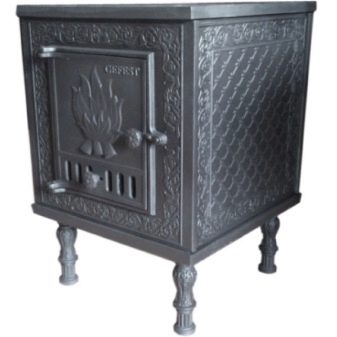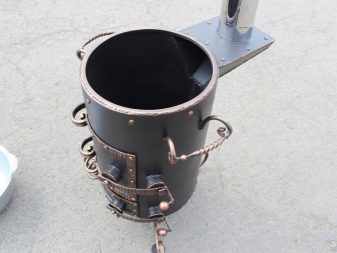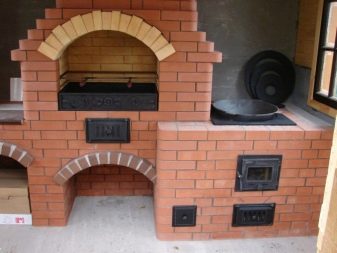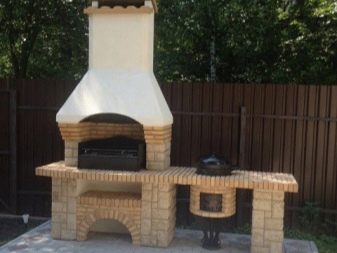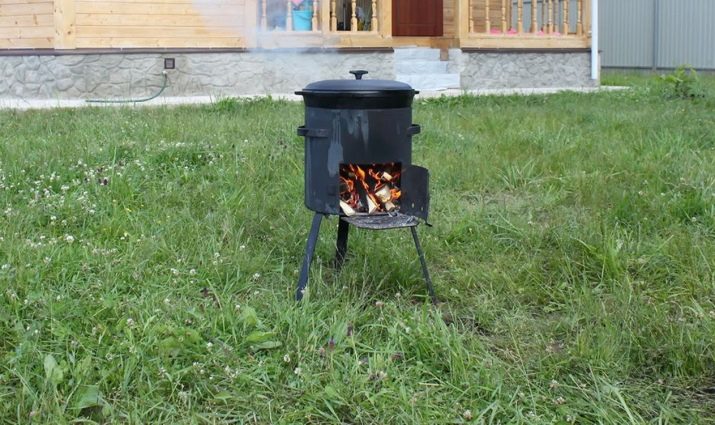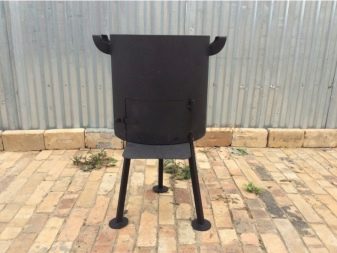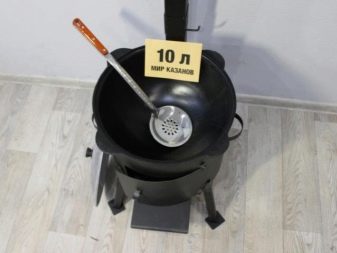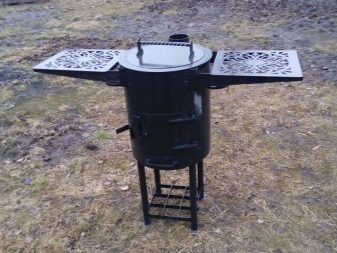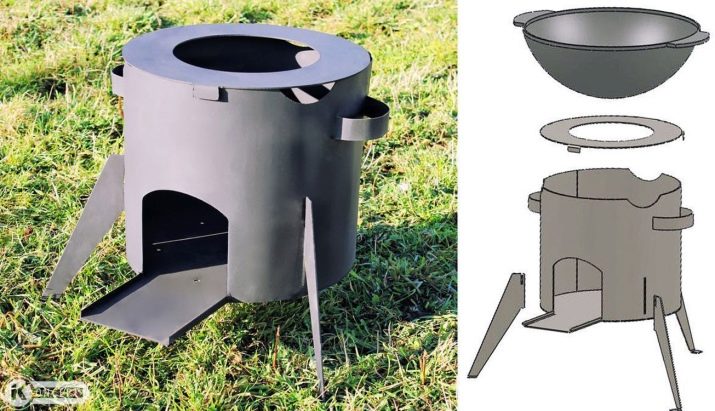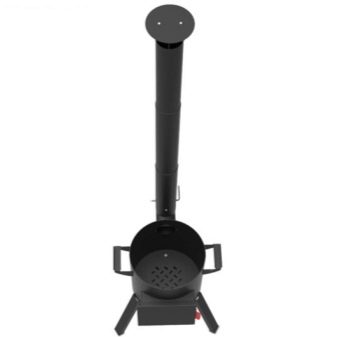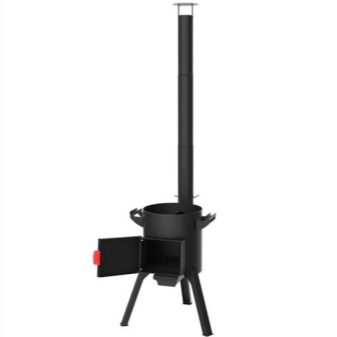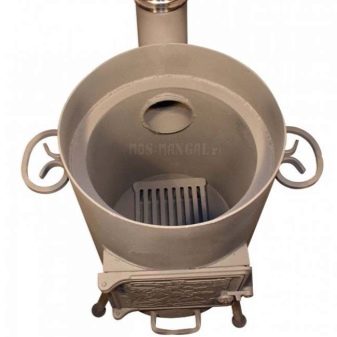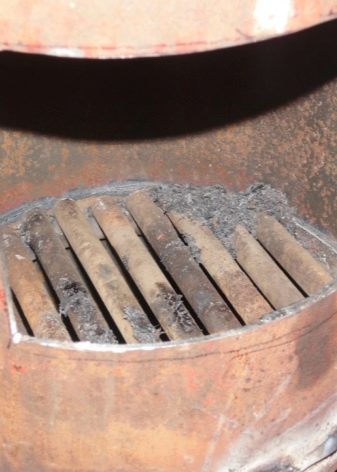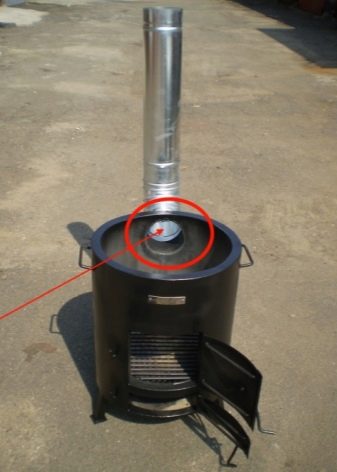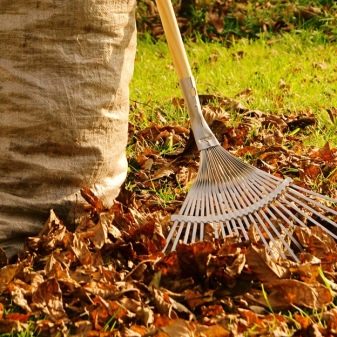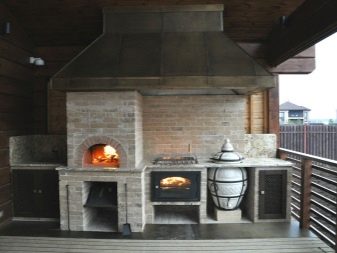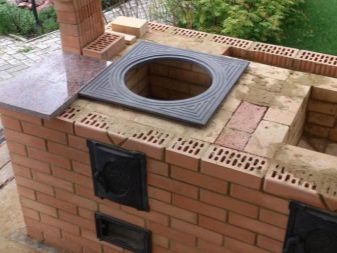Furnaces for cauldrons: types, selection criteria and installation features
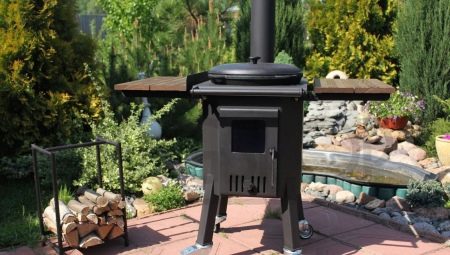
Eastern cuisine, especially Caucasian, makes a truly charming impression on most people. But in order to enjoy it, it is not enough to understand the recipes and even have the appropriate dishes. including a cauldron. Of great importance and auxiliary equipment, which also deserves careful study.
Features
The cauldron is heated uniformly with an open flame. This means that the walls and the bottom have the same temperature from the inside. But you can achieve a good result only when using a quality oven. There are stationary and mobile furnaces for cauldrons. The first type can be used all year round, and the second is mainly needed:
- travelers;
- to tourists;
- hunters;
- to fishermen.
One should not think that only pilaf is cooked in a cauldron. This type of dish is widely used in cooking meat and fish dishes. Among them are widespread:
- stews;
- ear;
- soups of various kinds;
- conder
Any of these dishes is much more practical to cook in a cauldron with the help of a stove, and not on a fire. The closed center is reliably protected from wind that allows to save heat. In most cases, the stoves are made collapsible and equipped with removable legs. This design is convenient for storage and transportation.
Externally, the stove looks like a round brazier.
Kinds
Furnaces for cauldrons are made of metal or brick. If the choice is made in favor of the metal construction, then stainless steel will be the ideal solution. Only occasionally use ordinary ferrous metal, covered with heat-resistant paint. But this design is not very perfect and does not last long enough.
The simplest type of stove is cylinder-shaped firebox. It makes an opening for the loading of fuel and smoke slots. A cauldron is placed on top and approximately 60-65% of the bottom contacts directly with the fire.
If the lightest stove for a cauldron is needed, then prefer tripod. To manufacture it, it is enough to bend the metal tube into a circle and weld or bolt the legs. This is an excellent mobile product, however, the uniform heating of the walls is not always ensured.
Let us consider in more detail the characteristics of stoves from:
- metal;
- bricks;
- clay
Metal constructions:
- are relatively inexpensive;
- installed without problems;
- do not create difficulties when using;
- can be deformed with intense mechanical stress.
Brick ovens have their positives. It is this option that best fits the canons adopted in Central Asia and Transcaucasia. Brick perfectly keeps heat, allows the use of bulk, weighty cauldrons. However, to manufacture such a furnace is difficult and therefore it is very expensive.
Clay products simpler than others and have relatively modest dimensions, while their serious disadvantage is unsatisfactory strength.
The chimney and chimney designs have conflicting properties. On the one hand, such additions make burning more stable and improve the culinary result. On the other hand, the furnace becomes heavier and even to some extent loses mobility.
Some versions of furnaces for a cauldron work on gas fuel. We are talking about, for example, the Kotlin TG-38 oven (12 liters in volume) and TG-48 (22 liters in volume).
The advantages of gas foci are:
- lack of soot;
- no smoke;
- ease of start-up;
- ease of changing the mode of operation.
There are gas tagans. An example of such a design is the TG-26. It was designed to produce a mobile and relatively powerful device of portable performance. Model TG-26 is best suited for cauldrons with a capacity of 6-8 liters, but in principle, you can use dishes with a capacity of 10-12 liters. Its main parameters are as follows:
- planting diameter - 0.26 m;
- weight with a burner - 9.4 kg;
- height with legs - 0.72 m.
Also working on gas models TG-38 and TG-48. Gas tagans can be used both on the street and in specially prepared premises. Even cast iron cauldrons can be used without problems on such foci - the base is quite strong. The furnaces themselves can also be made of cast iron alloys. They allow you to save fuel, because the hearth heats up very quickly and slowly cools.
Significant weight of cast iron is also a plus. Thanks to it, the stability of the structure is provided. Another property of cast iron products is also important - they rust weaker than those made of steel. Cast iron is very resistant to heat and does not burn through. From it can make different in appearance design, which serve for a long time.
As for chimneys, they are divided into 3 main groups:
- pipe;
- grate;
- triangular cuts at the top of the cylinder, insignificant in size.
Among the street furnaces for the cauldron the most widespread are metal square products with pipe chimneys. They are made mainly of steel sheets. Such forms as:
- cylinder;
- rectangular prism;
- square prism;
- hexagonal prism (less often with even more facets).
How to choose?
In most cases it will be quite correct to equip the stove with a chimney. It is used to reduce the smoke around the hearth. Such a problem is quite solvable if the pipe is high and the thrust is quite intense. As for the thickness of steel sheets, 3 mm is enough. Such sheets allow you to:
- do not strengthen the structure;
- do not be afraid of burning out;
- guarantee the ease of moving the furnace.
If you plan to use a cauldron with a volume of 10 to 20 liters, you can choose a stove height for an adult. For heavier cauldrons such high foci are no longer suitable.
Squat constructions are less convenient, but they are characterized by increased stability.
Regardless of the height of the stove, it is worth paying attention to the material from which it is made. Quite popular brick structures can be not only a stand for a cauldron, but also a whole complex, including:
- smokehouse;
- grill;
- brazier;
- many other items.
Of course, this is not a cheap solution. However, its qualities fully justify the significant cost. But brick furnaces must be abandoned if the important point is the mobility of the hearth.
On the other hand, their advantages can be considered external beauty and functionality. Of course, to buy a brick hearth in the usual sense of the word will not work - it will have to be constructed. The construction takes some time, albeit not too long.
As for metal stoves, when choosing between their modifications, one should pay attention to:
- total value;
- wall thickness;
- the kind of metal that is used in a particular case.
Metal ovens are stationary or mobile performance. The first type must be chosen if external elegance and service life are most important. The second type is recommended when you plan to often go on picnics, hiking, fishing. If it is mobility that matters most when choosing, it is worthwhile to abandon cast-iron stoves. But their steel counterparts to move even without any transport is quite possible.
However, we must understand that everything has its downside. The lightest steel furnaces often burn out in a short time. Particularly to fear this, however, should not be. After all, mobile products are mainly used in campaigns. If this is the case, and the stoves are not trying to be used as basic cooking appliances at home, there will be no problems.
Often one more thing is missed - the selection of the furnace to the size of the cauldron. It must be made a hole of the appropriate diameter. Therefore, you must first purchase one or more cauldrons, and then look for a suitable hearth. Ideally, you should purchase all the products in one place, because they usually sell compatible models there. In any case, it is useful to the interest in specific details and nuances.
Do not be afraid to ask sellers questions on the main characteristics of a particular furnace. On the contrary, if the merchants clearly shy away from answers, you should be wary.
Among all the stores are better suited selling stoves and cauldrons from the manufacturer. They set minimum prices and rarely sell unreliable products.
When evaluating a retail outlet, one should also pay attention to the completeness of the range, the quality of product descriptions.
Returning to the furnaces themselves, it is worth pointing out that steel and cast iron products should have legs. Flame, located above the ground, better warms the dishes. The same circumstance will allow not to stoop once again.
Buying a stove made of sheets of metal thinner than 2 mm makes no sense. They will either very soon burn through, or sag under load.
Top models
A good choice, in addition to the furnaces of the TG series, which have already been discussed, will be the MS-13 model. This collapsible product with a firebox size of 0.4 m outside and 0.245 m inside. The main body is assembled from a sheet of 3 mm thickness. The total mass of the structure reaches 17 kg.
A good alternative can be the model Grilever Berel 360. The parameters of this product are as follows:
- compatibility with cauldrons up to 8 l;
- disassembled chimney;
- ash box, in parallel performing the function of a blower;
- case thickness - 3 mm;
- coating heat-resistant dye, designed for temperatures up to 700 degrees.
More capacious cauldrons (up to 16-25 l) can be warmed on the stove MO-25. The walls of such lesions are double, and the chimney is also necessarily used. As stated by the manufacturer, this device belongs to the premium category. Double walls give another advantage - the minimum probability of burns. A special valve installed on the chimney will help to precisely adjust the heat output of the flame.
The Rocket-3 furnace works at solid fuel. Intense air supply to the combustion chamber creates a strong noise, due to which such an atypical name was given. The horizontal section of the pipe facilitates the loading of firewood and increases the safety of using the device as a whole. The thickness of the steel walls reaches 2 mm. The kit includes a pair of coasters.
Operation Tips
Whatever stove for a cauldron may be acquired, when using it you will need:
- clean the carbon from the inner walls;
- punch layers of soot in the chimney;
- clean up these blockages;
- regularly remove ash from the firebox and grate.
Before starting the stove will have to warm up properly. The fact is that in the factories inside the product a protective transport coating is applied, and it must be burned out. But even if the hearth is made of brick, it will still have to be ignited. This will allow:
- finally dry the raw bricks;
- increase the strength of the set solution;
- guarantee perfect dryness when working.
It is categorically unacceptable to use firewood in fireboxes designed only for the use of charcoal.
But even if the use of firewood is permissible, they cannot be ignited with gasoline, kerosene and other flammable substances. From here a conclusion: it is necessary to apply only faultless dry logs.
And a few more important rules:
- Do not burn household garbage, grass, leaves, dry plant stalks and the like in a cauldron;
- Do not pour water to put out firewood or coal;
- Do not attempt to replace this furnace with full-fledged heating devices, igniting a large fire.
Installation rules
No matter how careful the choice of product and no matter how properly treated it, poor installation can ruin the whole thing. Since stationary stoves must first of all create a good mood, they should be set only where the winning appearance will open.
In the absence of sufficient experience, it is better to immediately turn to professionals. The slightest mistake can be extremely dangerous!
If the stove has a wide chimney, then it is placed in the open air: either on the free part of the garden plot, or on the site under a shed. Products with a narrow channel for dumping smoke are recommended to be mounted in:
- arbors;
- barbecue houses;
- summer kitchens;
- verandas;
- on the terraces.
The passage of the chimney through any roof is allowed only with a special pipe extension. If the oven is placed in the open, you should also pay attention to:
- wind rose;
- near trees and shrubs;
- nearby buildings.
Smoke should not enter the living room. Installing a brazier directly under the trees or bushes would be a bad idea. Even if they do not catch fire, a similar focus due to excessive heat and smoke can harm the plants.
But just choosing the right place is not enough. Heavy cast-iron stoves must be put on solid foundations, otherwise subsidence is inevitable. The best option when installing a stationary stove for a cauldron is considered to be reinforced concrete foundations with a minimum thickness of 0.1 m. Various decorative materials are placed on top of them.
By the way, it is not necessary to use only one decorative material.
The combination of several options can look no less advantageous. You can put the hearth on wooden floors, you just have to cover them with fire-resistant materials.
Barbecue stoves should be placed as far as possible from:
- stocks of easily igniting substances;
- structures and items with high thermal conductivity;
- items that support combustion.
Fire safety requirements also indicate that smoke extraction must be carried out especially carefully. When installing stoves in the gazebos for them, they make a single foundation in order to eliminate shifts relative to each other. Outdoor foci protect from the weather with the help of special waterproof coatings. All metal parts of the assembly are installed only after the solution has completely dried. There must be at least 72 hours between the end of installation and the start of operation of the furnace.
On the pros and cons of different furnaces for cauldrons, see the following video.


